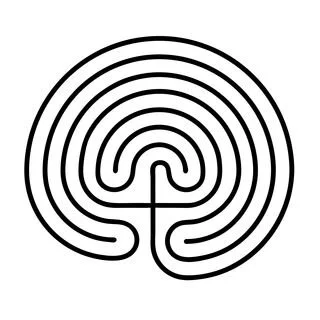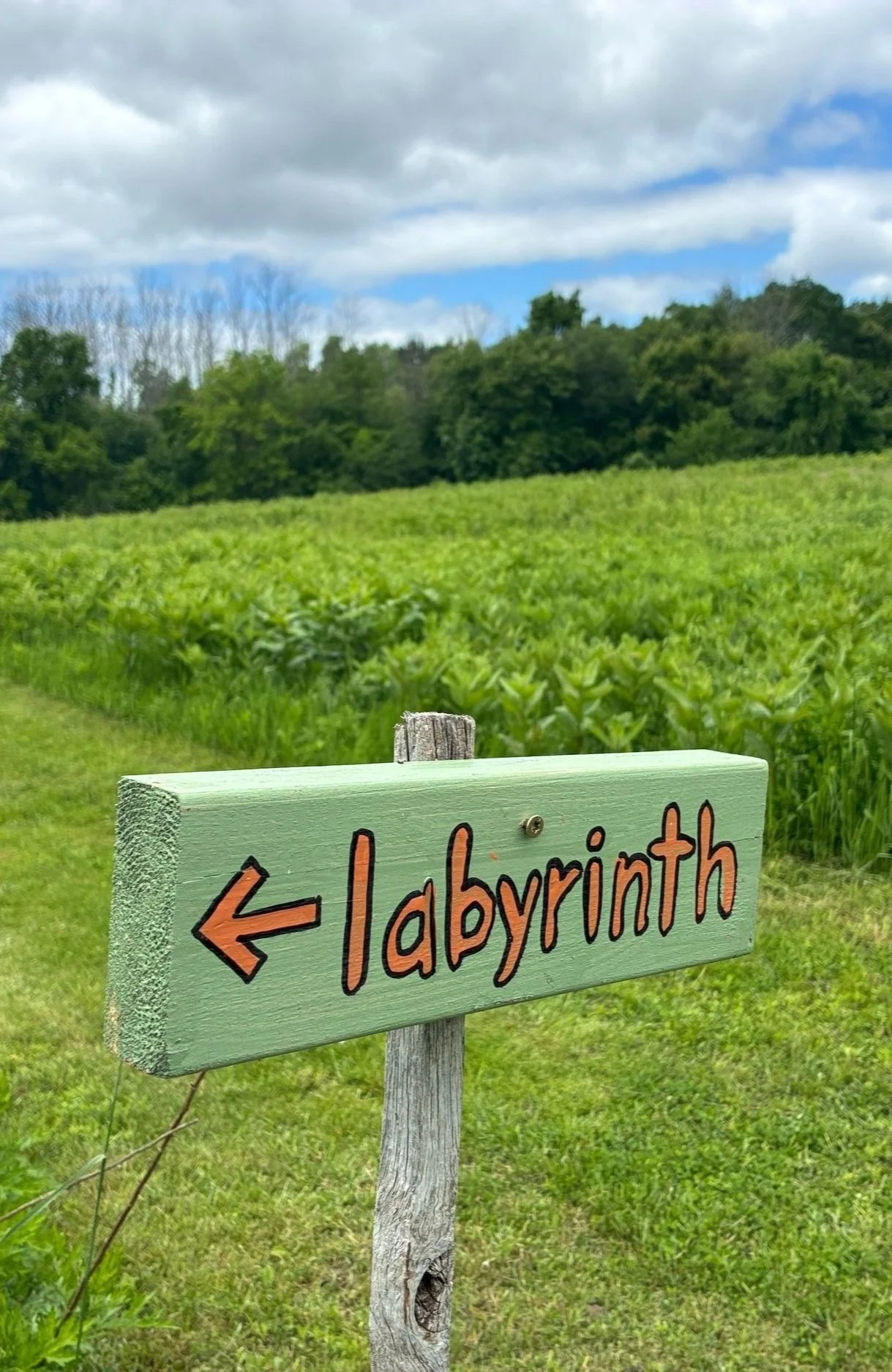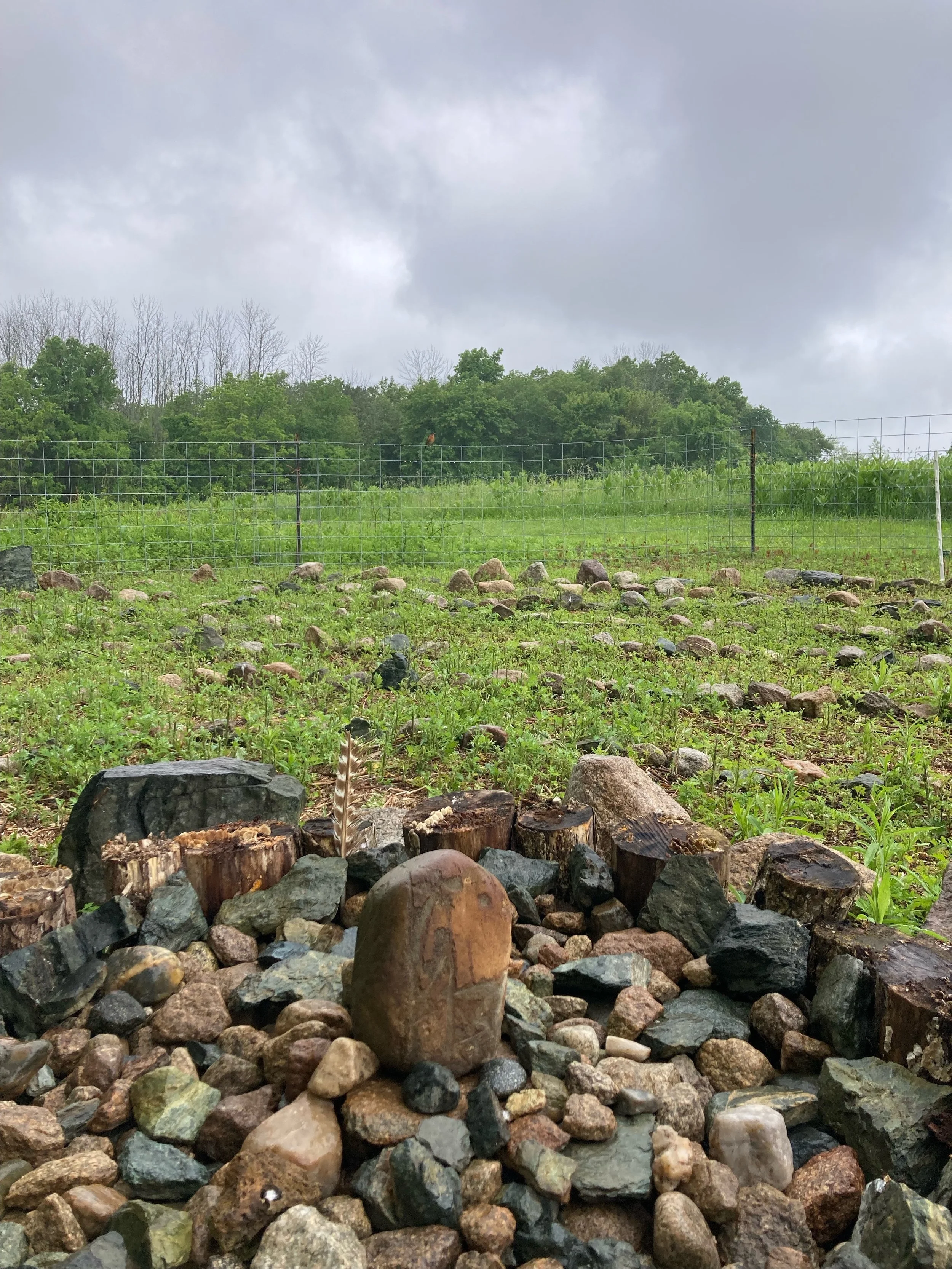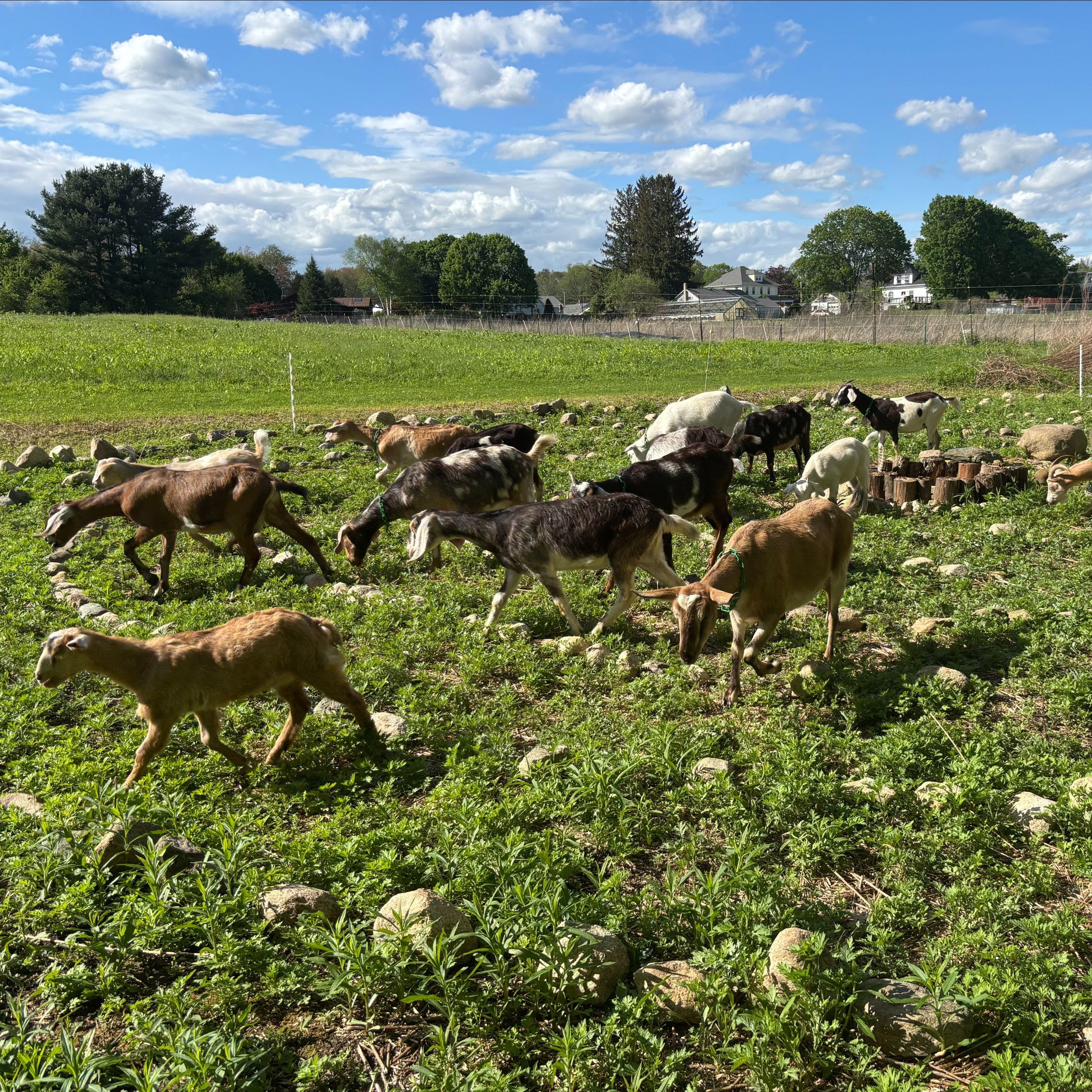
The Labyrinth
at Gather Farm
The labyrinth at Gather Farm is a seven circuit Cretan (classical) design and offers visitors to the farm an opportunity to cultivate reflection and mindfulness while deepening connections to self, community and the land around us.
Envisioned and built by Rebecca Foster in the spring of 2025 with the help of a handful of friends,* the Labyrinth is roughly 55 feet by 65 feet with a unicursal (only one way in and out) path bounded by field stones. The farm’s goats did the initial clearing of the land (overgrown with mostly mugwort and goldenrod) and they continue to keep the circuits “mowed”. It turns out that mugwort is super nutritious for goats!
What is a labyrinth?
A labyrinth is a meditative walking path that leads from the outer edge in a circuitous way to the center. There are no tricks to it and no dead ends. Unlike a maze where you lose your way, the labyrinth is a contemplative tool that can help you find your way to presence, new insights into life’s questions as well as peace of mind, body & spirit.
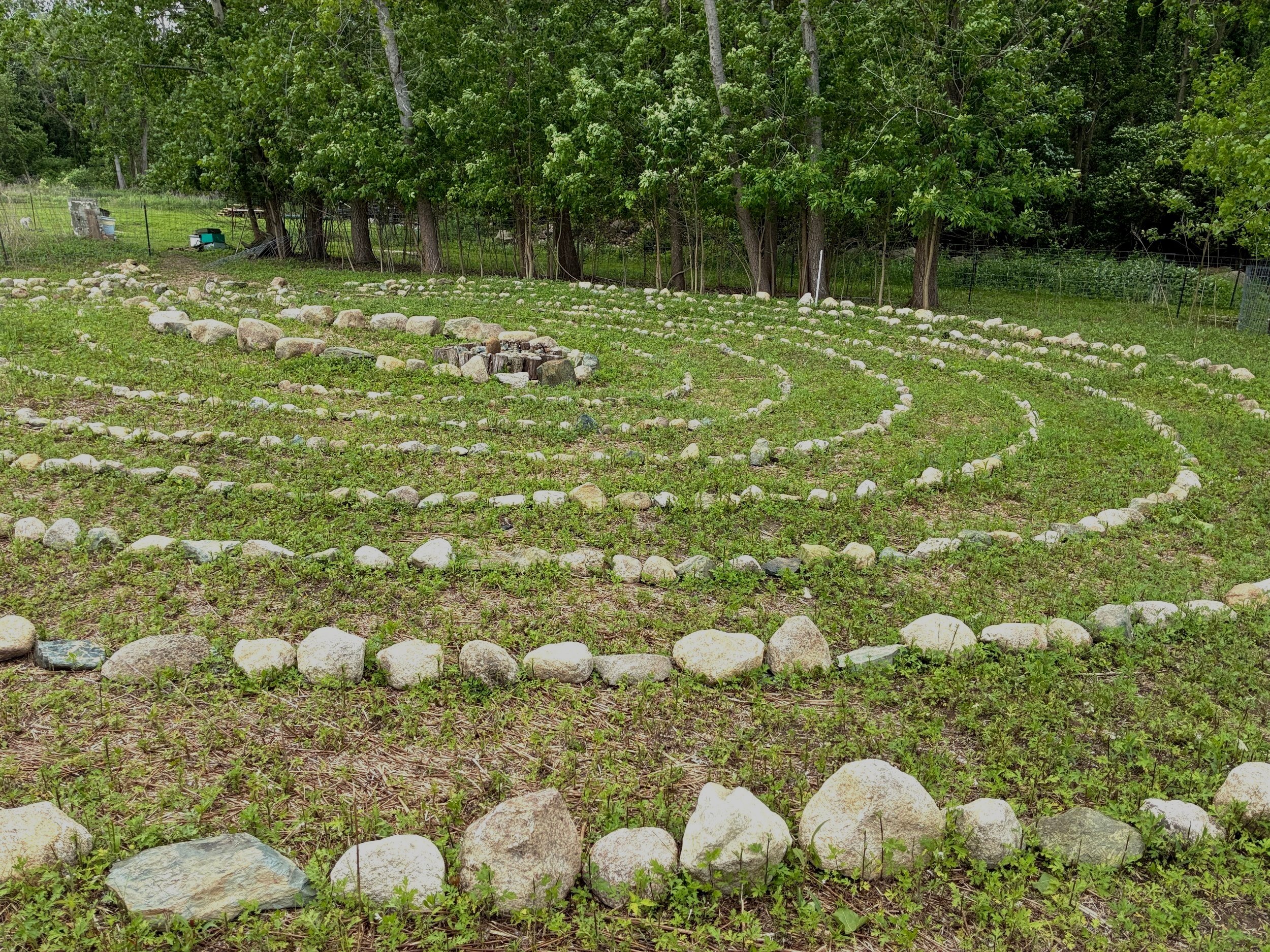
Labyrinth History
Labyrinths are linked to the Greek myth of the Minotaur which describes a monster with the body of a man and a head of a bull imprisoned in a labyrinth on the Isle of Crete. The Athenian hero Theseus navigates the labyrinth with the help of a thread from Ariadne and ultimately slays the beast. Even though literary descriptions make it clear that the Minotaur was trapped in a complex branching maze, the classical Cretan design (which we have here at the farm and which appears on Creatan coins as early as 430 BC) is unicursal, meaning there is only one way in and out.
Logistical Notes
Visitors to Gather Farm are invited to (respectfully) walk the labyrinth anytime between sunrise and sunset.
Park your car in front of the high tunnels (note painted “park” signs on the right) and follow the main grass path past the high tunnels (on left) and fields (on right). Turn left at the labyrinth sign and look for the opening on your right.
Please be respectful of other walkers. You may be here to check it out and have a new fun experience but other walkers may be here for quiet contemplation or solace. If you want to have a conversation while others are walking, please step out of the fenced area and keep voices low.
Please DO NOT walk the labyrinth barefoot. There are still some sharp stems poking up out of the earth and there may be an errant leaf of poison ivy, especially on the field side of the labyrinth.
While mowers and goats keep the paths both to and inside the labyrinth shorn, it’s always a good idea to do a tick check after you walk at the farm!
How to walk a labyrinth
While there is no WRONG way to walk a labyrinth (sometimes it’s fun for kids to run around and jump across lines or for friends to chat their way through), we invite visitors to opt for a more contemplative approach by walking in silence, especially if there are other labyrinth walkers present.
There are generally three parts to a labyrinth walk: entering the labyrinth, spending time in the middle and exiting the labyrinth. Here are some suggestions:
Asking a question: Ask an open-ended question at the entrance and then allow your mind to relax & release thoughts as you slowly walk the unicursal path into the center. Then spend some time in the center in silent meditation or reflection. As you follow the path back out of the labyrinth invite / allow any insights to emerge regarding your initial question.
Centering Prayer: Choose a sacred word or inspiring verse to slowly repeat as you make your way into the labyrinth, as you rest in the center of it and then as you make your way out. If your mind wanders, simply notice and gently return to your chosen word or phrase.
Walking Meditation: Feel the soles of your feet connecting with the earth as you walk. Notice the movements of your legs as they lift, move and place each step. These sensations are “the anchor” of your meditation. If your mind wanders, just notice the thoughts or distractions (with a gentle smile rather than judgement) and return to the felt sensation of your next step. While in the center of the labyrinth continue with a few minutes of basic standing or sitting meditation. Then return to walking meditation on your way out.
Five Sense Mindfulness: Bring all of your senses online! Hear the birds, smell the fresh air, see the rich textures & subtle tones of the field stones, notice the breeze moving the grasses and trees around you. Feel your whole body alive as you walk or rest. Notice that you are an essential part of the whole mysterious magical natural world around you.
Labyrinth Yoga: Bring a mat (we can loan you one) and leave it at the central cross of stones as you enter. Then when you make your final turn into the center of the labyrinth, pick it back up and bring it with you. Take some time stretching and breathing as you take in the gifts of the land & sky around you. (Note: Labyrinth Yoga is best when you are the only one present so as not to block up the center space for other walkers.)
Gatha Walking: Similar to “Centering Prayer,” Gatha Walking means Verse Walking in Sanskrit. Here’s a verse from Thich Nhat Han that is perfect for the labyrinth:
As I walk my mind will wander.
With each sound my mind returns.
With each breath my heart is open.
With each step I touch this earth.
Additional tips:
Some people like to bring a natural object such as a stone or feather with them to place in the center altar as an offering to the labyrinth.
Generally, the slower you walk a labyrinth the deeper the experience. However, sometimes a swift energizing walk is what the heart-mind-body needs. All of the above suggestions for walking a labyrinth can be adapted to a faster pace. (For example, with Centering Prayer you might repeat the sacred word or phrase every 4-6 steps rather than every 1-2.)
The labyrinth path is intentionally wide enough so that if one person is walking faster than another or if two people walking opposite directions meet, they can mindfully pass by each other.
As you exit the labyrinth it’s customary to turn and thank the labyrinth for whatever it has offered you.
While usually people walk the path both in and out, it is perfectly fine to leave the labyrinth by crossing the stones if you need or would like a swifter exit!
Labyrinths Beyond the Farm
Rebecca's first labyrinth (a 66 foot Chartres replica on the banks of the Salmon River in Idaho) is featured in Twylia Alexander's book "Labyrinth Journeys" which chronicles the author's quest to visit a labyrinth made by a woman in all 50 states.
Caught the labyrinth bug? Visit the World Wide Labyrinth Locator for listings of over 6,000 labyrinths around the world, 23 of which are in the state of Rhode Island!
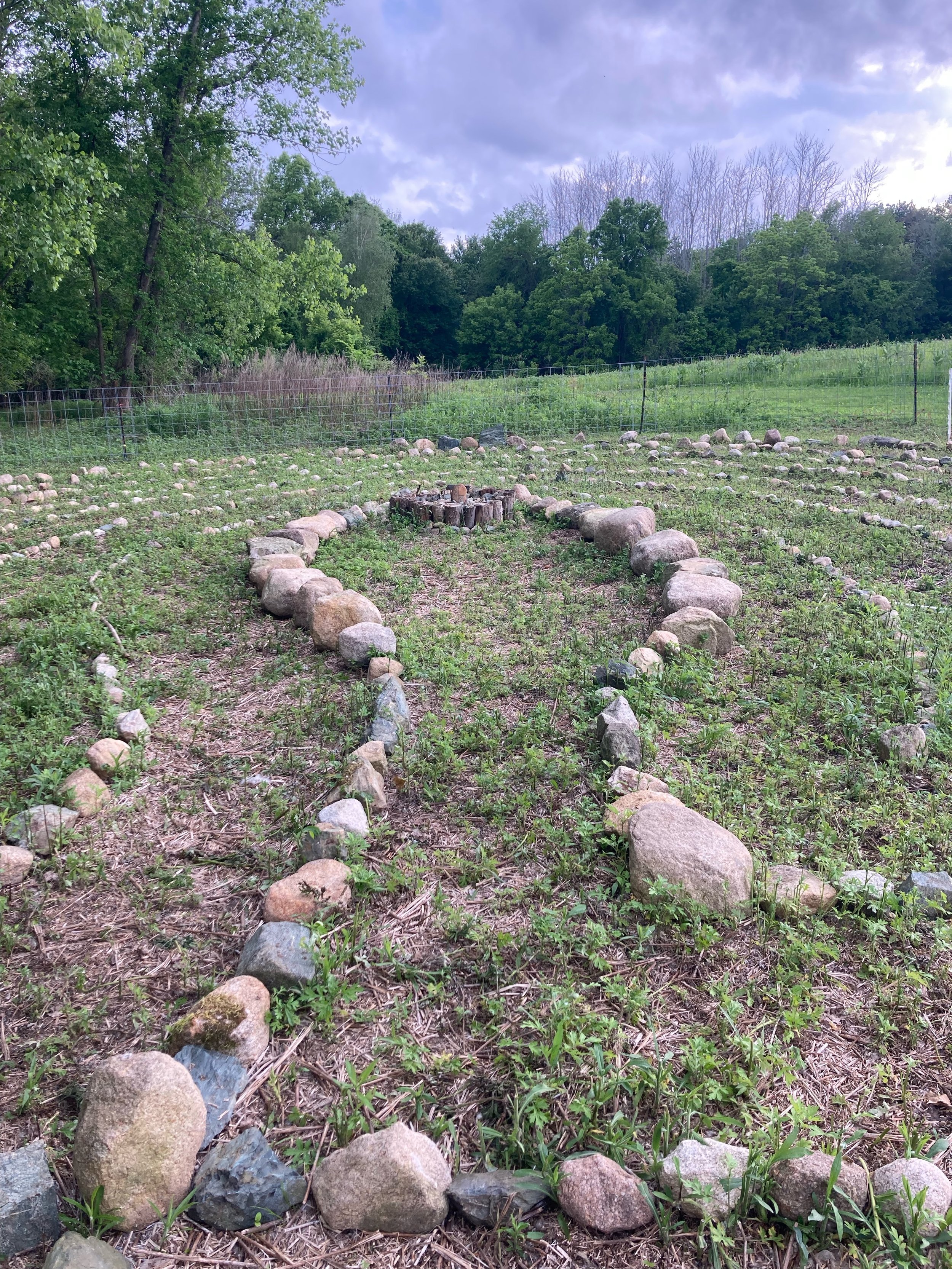
THANK YOU FOR VISITING THE LABYRINTH AT GATHER FARM!
*Extra special gratitude goes to Andrew “Rise” Harvey for his support in planning, designing and laying out the labyrinth circuits! Also thanks to Rob Abatecola, Michael Swerdloff, Debbie Jamas, Jeff Doff, Felice Winograd, Alex & Noah Holt, Lee & Sylvan Cowan, Peter Edwards, and Troy Morrison for helping to haul stones! Lastly, three cheers for Aidan Simmons and her beautiful “little girls” for clearing and maintaining the labyrinth land… 🌿🐐💓

